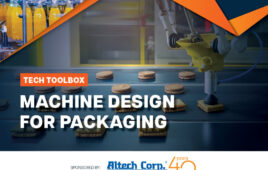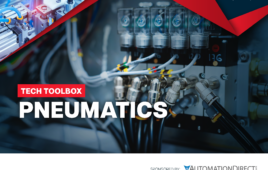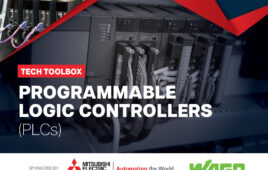
By Steve Sullivan, Training & Development Supervisor at Rittal North America, LLC
While it may be the last consideration, picking the right enclosure for your industrial application can mean the success or failure of your operations. Manufacturers conduct comprehensive research and make substantial investments in their controls and switchgear, but typically give little thought to the enclosure that will protect, cool and power their systems. At Rittal, we understand that significant downtime could impact your bottom line, so we’ve come up with the top considerations that every designer must consider to find the right enclosure for their implementation.
The first step in the specification process is choosing between a common welded enclosure or a flexible modular enclosure. Throughout this article we’ll compare the two types in more detail, but modular enclosures have high load-capacity, are lighter, and more flexible than unibody designs.
The next consideration is the enclosure materials, primarily carbon or stainless steel. Everyday protection from contaminants like dirt, dust, and dripping or splashing water can be achieved with powder-coated, carbon steel enclosures. For harsher environments, stainless steel enclosures are a good choice. With their corrosion-resistant and sanitary properties, stainless steel enclosures provide superior protection against corrosion, chemicals, high-pressure washes, rust, and various harsh weather conditions. Stainless steel enclosures are popular choices in oil and gas, wastewater, mining, pharmaceutical, and food and beverage applications.

And the weight of your equipment matters as well. Modular enclosures can be two-thirds lighter than their unibody counterparts, yet are still able to hold an equivalent amount of weight. This is due to the fact that the mounting panel and components are carried by the internal frame versus the welded walls of the enclosure. This means a greater degree of worker safety, both for routine maintenance and transportation purposes. Commonly, a unibody enclosure must be laid down for panel installation and removal which requires multiple workers, a forklift, and chains.
One common reason for downtime of controls and switchgear is caused by contaminants shortening the lifecycle of equipment components. And this relates closely to having the enclosure rated for the appropriate level of NEMA- or UL-rated protection.
Type 1 and 2 designs are made to protect against risk of human contact with electrically charged parts. Type 3R rated enclosures meet outdoor paint requirements and allow any water inside to drain from the enclosure. Type 4 designs are dust-tight, and can withstand hose-directed water. Type 12 enclosures protect against falling dirt and circulating particulate, as well as dripping water and non-corrosive coolant splashing.
Choosing the size of your enclosure is also key, as it will directly impact the overall space needed for your system. This is where modular enclosures and unibody designs significantly differ. Modular designs allow for the full utilization of 3D space within the enclosure. Because the frame can hold components as well, design is not limited to the mounting panel. This means that you can shrink the footprint of the enclosure while still maintaining the same operational space.
The greater surface area modular enclosures deliver allow for more accessories. The smaller doors on unibody designs reduce the size of the mounting panel that can be passed through. Modular enclosures feature removable doors and sidewalls, so panel size can be 15% larger than comparative unibody design. This can be used for adding components like busbar power, LED lighting, and fold-up keyboard shelves.

From a safety standpoint, a key consideration should be in the installation of a flange mount disconnect solution. These prevent workers from opening an enclosure until the power is shut off. Even with multiple bayed cabinets, when the power is on, you cannot physically open any door. Once de-energized, the master door can be opened, which then opens other doors in the bayed units. Once work is completed, every door, including the downstream doors, must be closed before the power can return.
Beyond safety issues, consideration should be given to security. Enclosures are often deployed in remote, unmonitored and uncontrolled environments. Unibody designs are limited in the in-field customization necessary to reverse doors, change out locks or add new security features.
On the other hand, the doors of a modular enclosure can be easily reversed, feature quick, tool-less swapping of lock systems, and enable the addition of biometric or IoT-enabled access controls. These can be installed directly within the cabinet, sending alerts by both phone and email whenever a door is opened, giving you the ease of remote security monitoring.
When you take all of the considerations together, modular enclosures are a vital component to the success of your overall manufacturing system. The right carbon or stainless steel enclosure, rated for the appropriate level of protection, will lengthen the service life and improve the efficiency of your controls and switchgear equipment. This will ensure your operations will deliver maximum value to your operations, and your bottom line.
For more information visit Rittal at: https://www.rittal.us/
Sponsored content by Rittal North America
Filed Under: SPONSORED CONTENT




